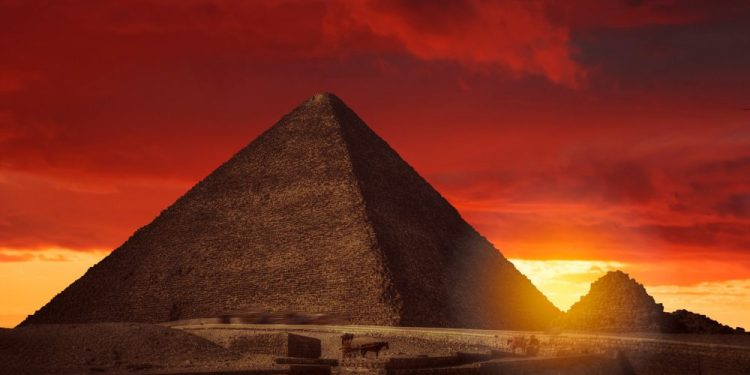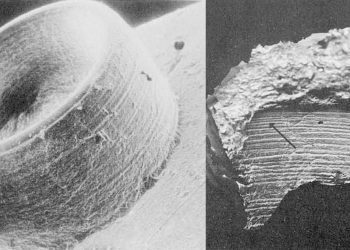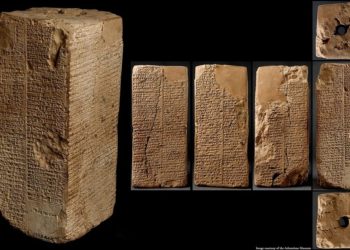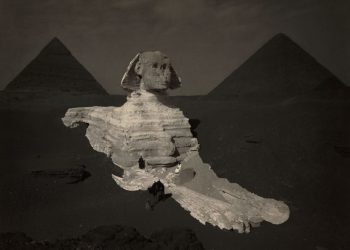The Great Pyramid of Giza is one of the oldest pyramids on the surface of the planet. Despite not being the oldest and not even the largest, this ancient structure has captivated mankind for thousands of years.
Believed to have been built with more than 2.3 million blocks of stone, the Great Pyramid is thought to have been commissioned during the Fourth Dynasty reign of King Khufu some 4,500 years ago. According to mainstream Egyptologists, the massive monument at Giza was built to serve as the eternal resting place for the Pharaoh, a claim that is challenged by numerous scholars and academics.
Looking back in history
Although there are no written accounts that mention the exact process by which the Great Pyramid of Giza was built, based on archeological guesswork, experts think it was achieved in no more than 20 years.
During this time, the ancient Egyptians are believed to have—somehow—quarried, transported, and used 5.5 million tones of limestone, 8,000 tones of granite (the granite was imported from Aswan located around 800 kilometers away), and 500,000 tones of mortar.
Some stones used in the construction of the Great Pyramid of Giza weigh as much as 60 tones. It remains a profound mystery to this date how the ancient Egyptians managed to stack, move, and quarry such megalithic stones in the first place.
Incredibly, this allowed the ancient Egyptians to produce an ancient wonder of the world—a towering structure standing at 146.7 meters originally, currently at 138.8 meters, and with a total weight of around 6 million tons.
The Great Pyramid is one of the most massive pyramids in terms of volume at 2,583,283 cubic meters (91,227,778 cu ft).
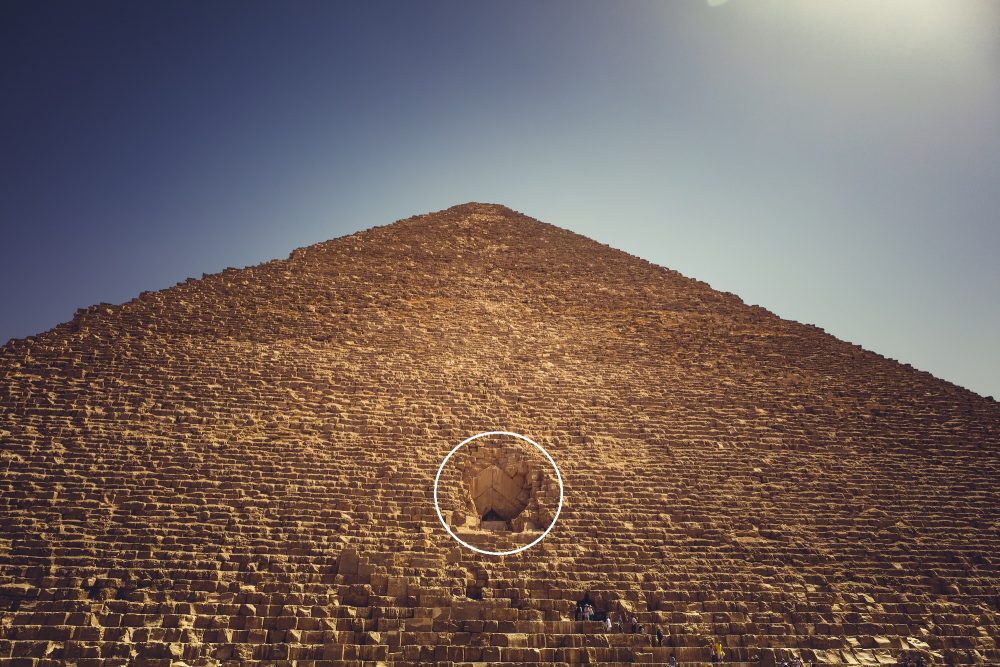
As the only standing wonder of the ancient world, and the only one that remains mostly intact, the great pyramid of Giza attracts people from all over the world. We’ve studied, measured, and researched the Great Pyramid and its surroundings for centuries.
And even despite such a long time staring at its beauty, we’ve still not been able to fully understand how, why, and when it was exactly built.
We can make an educated guess, but that’s the best we can do.
Why? Because no matter how much effort we put into research, the Great Pyramid—or any other Egyptian pyramids—we are always left with the absence of documents, texts, or information relating to its construction.
For reasons we are unsure, and despite the fact that the ancient Egyptians were excellent record keepers, we have not encountered a single ancient papyrus that tells us anything about the ancient Egyptian pyramid building.
Some would say that we have Merer’s Journal, an alleged collection of papyri that “explains how the pyramid was built.”
This, however, is just a trick used by media outlets around the globe to get clicks on their website. Merer’s Journal, although sensational, does not tell us HOW the pyramid was built. The papyri do tell us that during the reign of Khufu, stones were transported to Giza from Tura.
Merer’s Journal, also called the Diary of Merer, is often wrongly cited by many people as the ultimate evidence that the Great Pyramid was built by Khufu. This is a mistake; although the papyri do not specify where the stones were to be used or for what end, given the diary may date to what is widely considered the very end of Khufu’s reign, archaeologists and Egyptologists such as Pierre Tallet of Paris-Sorbonne University believe they were most likely for cladding the outside of the Great Pyramid. Note: LIKELY.
Inside the Pyramid
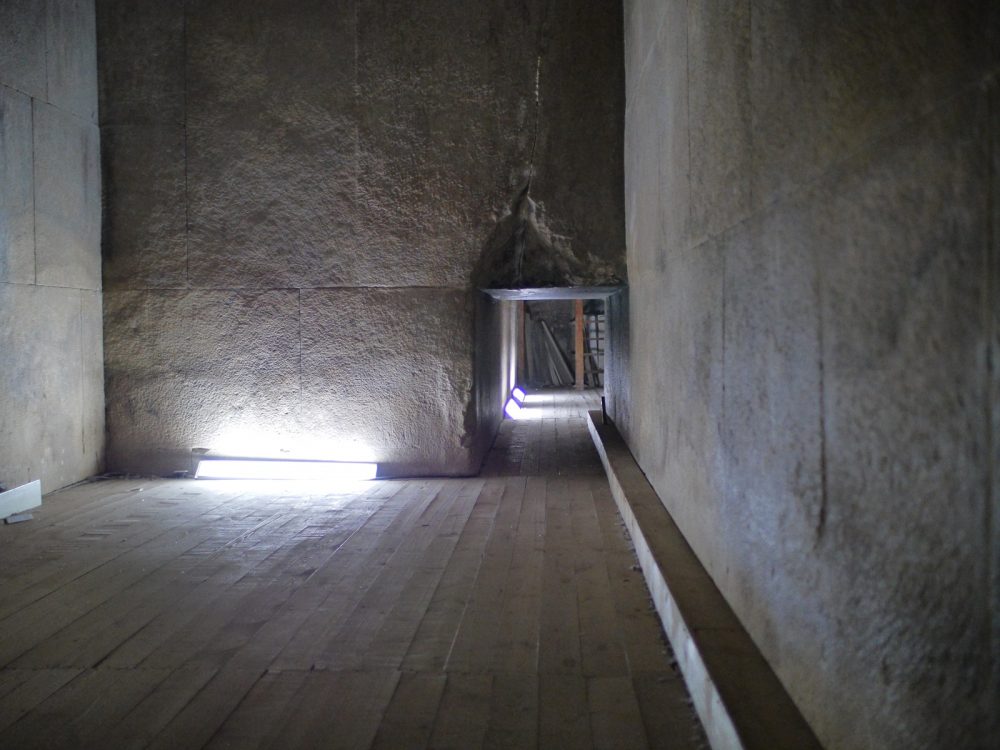
The exterior of the pyramid bears evidence of a structure designed and built with great care and intricate planning. But just as its exterior is a mind-boggling achievement, its interior is equally stunning, for more reasons that one.
The monument’s original entrance is located on its northern side, some 17 meters above the ground level, around 7.3 meters east of the centerline of the Great Pyramid.
There are four main sections inside the Great Pyramid. Below ground level is the so-called unfinished subterranean chamber. Cut into the bedrock upon which the pyramid was eventually built; this room remains unfinished with roughly cut blocks of stone.
The Queen’s chamber is located halfway between the pyramid’s north and south faces and measures 5.75 meters (18.9 ft) north to south, 5.23 meters (17.2 ft) east to west, and has a pointed roof with an apex 6.23 meters (20.4 ft) above the floor. This room, which is completely undecorated just as the rest of the inside of the pyramid, features shafts that run horizontally for around 2 meters before slowing upwards.
The Kings Chamber—also undecorated—has narrow shafts built into the northern and southern walls. The room is completely faced with granite. The upper parts of the room are home to nine massive slabs of stone that have an estimated total weight of 800 tons.
These parts are known as the relieving chambers and are just above the King’s Chamber. Curiously, one of the stones with the “relieving chambers” supposedly bears the mark of the work gang that participated in the construction of the pyramid, but this claim has been highly contested throughout the years.
The Grand Gallery is only 1.04 meters wide and is roofed by slabs of stone that were laid at a steeper angle than those on the floor of the gallery. Each of the stones was fit into an opening that was cut into the top of the gallery.
The mysterious big void and more
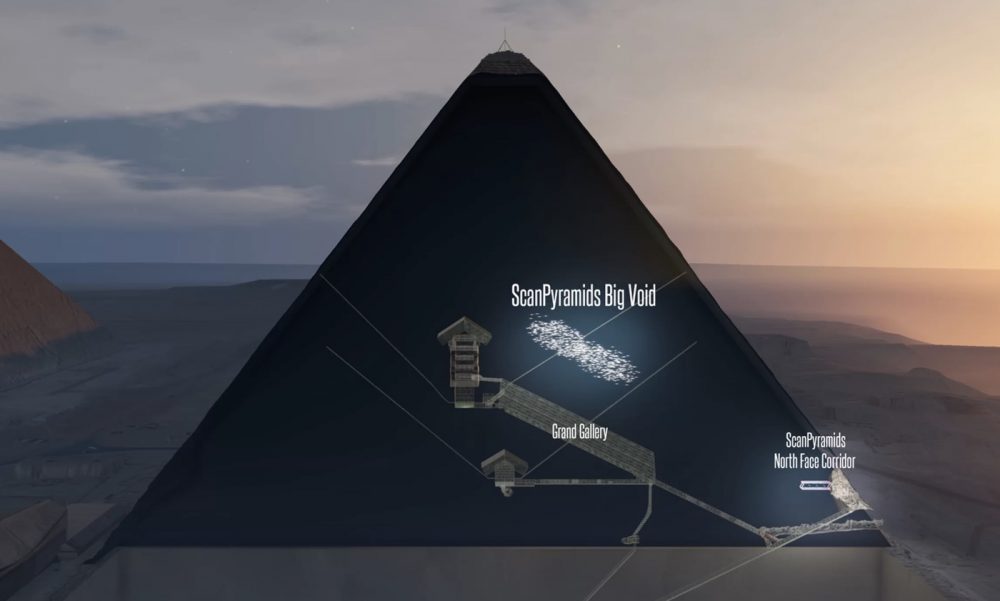
The Big Void is without a reason of a doubt one of the most significant recent discoveries inside the pyramid and one of the most mysterious.
Found back in 2017, the cavity was found by scientists of the Scan Pyramids project, which were analyzing the pyramid with muon radiography. Its length is believed to be around 30 meters and has a cross-section similar to the Grand Gallery. Since its discovery more than three years ago, its existence has been verified by at least three different studies.
The exact purpose of the cavity is not known, and experts have still not found a way to enter the chamber without potentially damaging what’s inside. Although exciting, experts such as Zahi Hawass don’t believe the chamber was of great importance and may have just been a gap that was used int he construction fo the Grand Gallery.
I personally don’t believe this was the case since we would have many more similar open spaces in the pyramid.
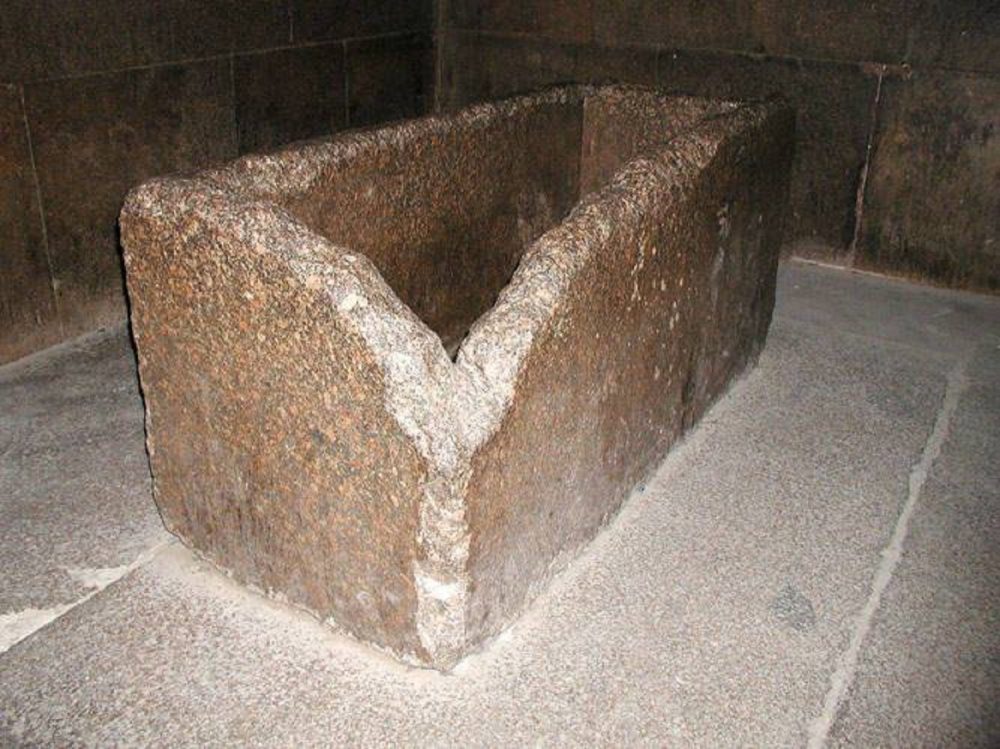
The Sarcophagus inside the King’s chamber is another mystery to me. Mainstream experts tell us that it was there where the Pharaoh was laid to rest some 4,500 years ago. The object is rectangular, and one of its corners is clearly damaged. Since it is larger than the ascending passage of the pyramid, the sarcophagus could not have been placed there after the pyramid was completed. So, how was it moved inside?
One theory is that it was placed there before the roof was put into place. But let’s say for the moment that this was the case and that at one point in history, around 4,500 years ago, King Khufu was laid to rest inside the roughly cut sarcophagus.
Do you think that a ruler that built one of the most impressive monuments in the history of mankind would have been laid to rest inside such a crudely finished sarcophagus? One that is entirely undecorated?
This brings us to another mystery: the undecorated interior of the Great Pyramid.

Although there’s a bunch of modern graffiti inside the Great Pyramid and its chambers, there are no ancient writings inside it.
One would expect that such a magnificent structure would be decorated with beautiful inscriptions, symbols, depictions of the Pharaoh, and hieroglyphs. This, although case in the tombs of the Valley of the Kings, is not the case inside the Great Pyramid. The King’s chamber completely lacks any kind of decorations on the walls, as you can see in the above image.
The Great Pyramid is thought to have been completed 4,500 years ago. If the pyramid was indeed completed, why would the builders leave one chamber, the subterranean chamber, in such a poor condition? The Great Pyramid is a magnificent piece of engineering and design. Its existences testify that thousands of years ago, ancient civilizations were capable of mind-boggling architectural achievements.
So, why do we have a crude, unfinished chamber beneath the pyramid? Furthermore, a study published in June 2018 describes the electromagnetic properties of the Great Pyramid.
Titled “Electromagnetic properties of the Great Pyramid: First multipole resonances and energy concentration,” the study published in the Journal of Applied Physics describes, among other things, that the Great Pyramid concentrates electromagnetic energy and concentrates it beneath, precisely inside the unfinished chamber.
This, the scientists say, is a mere coincidence.
But what if it is not?
Join the discussion and participate in awesome giveaways in our mobile Telegram group. Join Curiosmos on Telegram Today. t.me/Curiosmos



